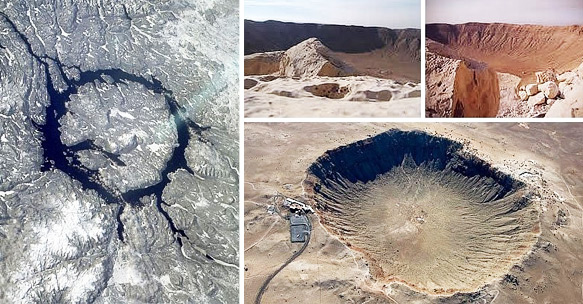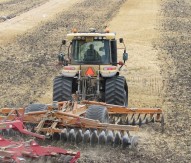
Profile: European space horizon
With the turn of the millennium, the European Commission has become a significant contributor to the development of European space research and technology. It has gradually increased funding for the advancement of space science, an area which has consistently been identified being an important factor for Europe’s future growth. The space research projects in the Seventh Framework Programme have already covered a large spectrum of research themes and topics, and the plans for the next programme, Horizon 2020, are even more ambitious.
Horizon 2020
Funding support for space research has seen a continued increase, both in FP7 with regard to FP6 and now even more in Horizon 2020.
The programme will begin in 2014, the main overall themes being ‘Excellent Science’, ‘Competitive Industries,’ and ‘Better Society’. Calls for projects will continue until 2020. The first of the above themes, research, will receive approximately a third of the total funding, roughly half of which will be allocated to European Research Council (ERC) projects.
Horizon 2020 will, without doubt, have a significant role in the development of European space science and technology, which will improve efforts to reach identified goals for the next decade. The planning and extensive discussions on the actual contents under the broad themes are continuing, while two Horizon 2020 workshops have now already taken place on Space Research and Technology Development (RTD), both organised by the Directorate-General for Enterprise and Industry.
These events were held to consult a representative cross-section of the European space research community on Space RTD areas that are of potential interest in the next framework programme.
The discussions in the first meeting on space technology included the goals of the programme, the practical steps of progress to reach the goals, and the co-ordination between different research activities to support the process in an optimal way. Viewpoints and ideas of the participants were collected and discussed in smaller sessions that focused on various topics in the field, three of which are discussed briefly below.
Near Earth Objects
Near Earth Objects (NEO) and Near Earth Asteroids (NEA) are a group of small bodies in the solar system that orbit the Sun and pass the Earth very close at some phase of their orbit. Nearly 10,000 NEAs have been found in observational data from 1980-2012, the smallest being a few meters in diameter, but there are also almost a thousand 1km+ NEAs.
The effects caused by possible Earth impact of such an object depends strongly on the size and mass, and varies from a fairly small crater around the impact to global effects that may be a threat to the whole flora and fauna at Earth (a large asteroid of over 10km in size). The latest such event happened recently in Chelyabinsk, Russia.
NASA has a large programme to address this issue and in Europe it is a part of the Space Situational Awareness (SSA) programme of ESA. The plan of ESA’s SSA to address this issue includes four main tasks: the monitoring of NEO orbits; the estimates of probabilities of impact to our planet; the assessment of consequences of possible impacts; and developing methods for deflection of impacts.
Additional support (to the resources and funding provided by ESA) will be critically important for SSA, and so the establishment of a strategic research cluster (SRC) in Horizon 2020 is of major importance. The results gained in the currently on-going EU FP7 project NEOShield could provide a basis for the work and also for the research agenda of the SRC.
Competitiveness and non-dependence
The previous framework programmes have already invested in improving the competitiveness of the European industry and non-dependence of European technology. Examples of FP7 space projects with those aims in space technology are the E-SQUID project co-ordinated by the University of Helsinki, and the SPACEKIDS project co-ordinated by the University of Cardiff, both of which work for the development of ultra-sensitive cryogenic sensors, and have also built a working contact via exchange of expertise at the Strategic Advisory Board level.
The support for similar aims should definitely be continued in Horizon 2020, thereby exploiting the experience gained thus far.
Significant work has also been done in the European space technology harmonisation process in defining ways towards largely the same goals. The results of this work should be exploited in Horizon 2020, but it should not be the only guideline. New ideas and initiatives not included in the harmonisation plan should also be given opportunities, and participation of small SMEs, as project co-ordinators, should be given special credit. In this way, the potential of European research and industry could be used more effectively, and the competitiveness and non-dependence of Europe as a whole could be improved.
Innovative mission concepts
An innovative mission concept may utilise new solutions for the basic components of space missions. These could include general factors of a space mission such as reliability, reusability, minimisation of the emissions of the launcher, multi-component space missions, and new ways of collaboration between space missions.
Technological solutions for spacecraft (S/C) propulsion, steering and altitude control of the S/C, payload technology, S/C navigation (autonomous and remote), telemetry system, and landers form another playground for space mission innovations. Among the FP7 projects, a good example of an innovative concept for S/C propulsion and steering is the Electric Solar Wind Sail.
Combining these new space travel technologies with new space navigation technologies such as space navigation using X-ray pulsar stars, and smaller and more sensitive instruments that are currently being developed, will enable the emergence of fresh new areas of space activity and industry. An example of this is searching for minerals on asteroids, as well as building of networks for space weather monitoring using nano-satellites which can be developed and launched with a small fraction of investment compared to the traditional cost of a space mission.
To enable the most efficient use of European resources in space research and technology, the Horizon 2020 programme should provide both pre-defined topics in well recognised key development areas with long-term funding for large research clusters and smaller seed funding with much less restrictive topic definitions for new openings that may have potential for significant growth. Moreover, possibilities for further longer-term support for recognised ‘rising stars’ should be available in the later calls of the programme.
Juhani Huovelin
Co-ordinator, E-SQUID Project
Email Juhani Huovelin






